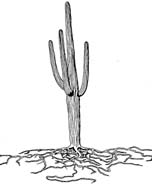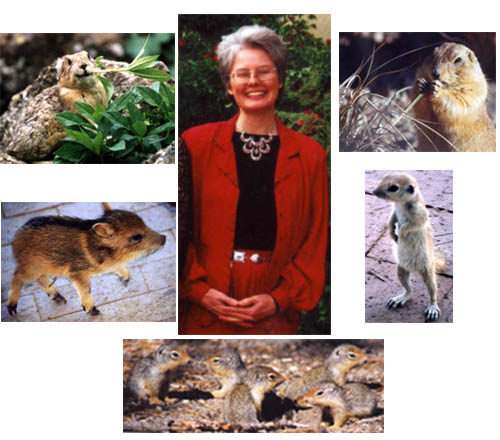Gunawardena U, VanEtten
H, Hawes MC 2005. Tissue specific localization of pea
(Pisum sativum L.) root infection by Nectria haematocca:
Mechanisms and consequences (Plant Physiology, in press)
Woo HH, Jeong B,
Hawes MC 2005 Flavonoids: From Cell Cycle to Biotechnology
(Biotechnology Letters, in press)
Celoy RM, Gardais
S, Wen F, Hawes MC 2004. Altered structure, composition,
and biological activity of root exudates in transgenic roots with altered
root cap gene expression. American Phytopathological Society, Proceedings.
J.E. Hubbard, M.
Schmitt, M. McClure, P. Stock, and M.C. Hawes. 2004.
Characterization of root exudate induced quiescence in parasitic, entomophathogenic,
and free-living nematode species. Nematology (in press)
Wen F, Gong FC,
Galbraith G, Woo HH, Hawes MC 2004. Border cell specific
gene expression. American Phytopathological Society, Proceedings.
Woo HH, Hirsch AM,
Hawes MC 2004. Proceedings of 5th International Symposium. Biotechnology
of Natural and Agricultural Products, Daegu University, Korea.
Zhu Y, Wen F, Zhao
X, Hawes MC 2004. Correlation between localized expression
of pectinmethylesterase (PME) and release of root exudates from the
root tip. Plant and Soil (in press)
Wen F, Woo HH, Hirsch
AM, Hawes MC 2004. Lethality of inducible, meristem
localized ectopic expression of ß-glucuronidase in plants. Plant
Molecular Biology Reporter 22: 7-14
Woo HH, Hirsch AM,
Hawes MC 2004. Atltered susceptibility to infection
by Sinorhizobium meliloti and Nectria haematococca
in alfalfa roots with altered cells cycle. Plant Cell Reports
22: 967-973.
Zhu Y, Wen F, Zhao
X, Hawes MC 2004. Isolation of the promoter of a root
cap expressed pectinmethylesterase gene from Pisum sativum L. Plant
and Soil 265: 47-59.
Hawes MC,
Woo HH, Wen F 2005. Root border cells: A delivery system for chemicals
controlling plant health. Soil Science (in press)
Woo HH, Faull K, Hirsch AM, Hawes MC 2003 Altered life
cycle in Arabidopsis plants expressing a UDP-glucuronosyltransferase
from Pisum sativum. Plant Physiology 133: 538-548
Hawes MC,
Bengough GA, Cassab G 2003. Root caps and rhizosphere. J Plant Growth
Regulation 21: 827-837
Farrar J, Hawes MC, Jones D, Lindow S 2003 How roots
control the flux of carbon to the rhizosphere. Ecology 84: 827–837
Gunawardena U, Hawes MC 2002 Role of border cells in
localized root infection by pathogenic fungi. Molecular Plant Microbe
Interactions 15: 1128-1136.
Woo HH, Kuleck G, Hirsch AM, Hawes MC 2002 Flavonoids:
Signal molecules in plant development Advances in Experimental Medicine
and Biology 505: 51-60
Miyasaka ,S., Hawes, M.C.
2001. Possible role of root border cells in aluminum tolerance in legumes.
Plant Physiol 1251978-87
Woo, H.H., Kuleck, G.,
Hirsch, A.M., Hawes, M.C. 2001. Flavonoids: Signals in plant
development. In "Experimental Medicine and Biology"
Gunawardena, U., Zhao, X., Hawes,
M.C. 2001. Roots: Contribution to the Rhizosphere. Encyclopedia
of Life Sciences 1.
Hawes, M.C., Gunawardena,
U., Miyasaka, S., Zhao, X. 2000. The role of root border cells in plant
defense. Trends in Plant Sciences 5:128-133.
Zhao, X., Schmidt, M., Hawes,
M.C. 2000. Species-dependent effects of root border cells on nematode
chemotaxis and motility. Phytopathol 90: 1239-1245.
Zhao, X., Misaghi, I., Hawes,
M.C. 2000. Stimulation of border cell production in response to
increased carbon dioxide levels. Plant Physiol 122: 1-8.
Wen, F., Zhu, Y., Brigham LA,
Hawes MC 1999. Expression of an inducible pectinmethylesterase
gene is required for border cell separation from roots of pea. Plant
Cell 11:1129-1140.
Woo HH, Brigham LA, Hawes
MC 1999. Detection of low abundance messages by a combination of
PCR and ribonuclease protection. Expression Genetics: Differential Display.
Pardee A, McClelland M, eds.
Woo HH, Orbach MJ, Hirsch AM,
Hawes MC 1999. Meristem localized inducible expression of a UDP-glycosyltransferase
gene is essential for growth and development. Plant Cell 11:1-14.
Hawes MC, Brigham LA,
Wen F, Woo HH, Zhu Y 1998. Function of root border cells: Pioneers in
the rhizosphere. Ann Rev Phytopathol 36:311-327.
Brigham LA, Woo HH, Wen F, Hawes
MC 1998. Meristem-specific suppression of mitosis and a global switch
in gene expression in the root cap of pea by endogenous signals. Plant
Physiol 118:1223-1231.

